While period homes boast lofty ceiling heights in their finer reception rooms, the kitchens to the rear are often low ceilinged and starved of light – a disconnect from our contemporary love of light and space. In the case of this Dublin 6 townhouse, instead of digging in and excavating the back of the house, as has been the practice with many such extensions, architect Mícheál de Siún of de Siún Architects suggested a different way to solve the problem.
In owners Eric Dunne and Conor Hudson he had two willing collaborators. Fans of interiors TV shows will recognise the pair from RTÉ's Home of the Year several seasons ago, when it featured their former project, number 21 Reheboth Place in Rialto, Dublin 8.
They had no intention of moving, but when a villa-style house in Rathmines caught their eye, the seller wouldn't entertain their bids until they put their own home on the market. Things went rapidly downhill when they sold their own home quickly but missed out on the Rathmines house. They ended up living in rented accommodation and with family for 18 months before they spotted an 1840s house in Rathmines, on a terrace located in the shadow of the dome of Rathmines' Church of Mary Immaculate Refuge of Sinners.
Their renovation budget was €180,000, but the property needed a lot of work and an early meeting with de Siún was sobering – he put the refurbishment costs at double their budget. Hudson, who is an accountant, crunched the numbers and they decided to go for it.
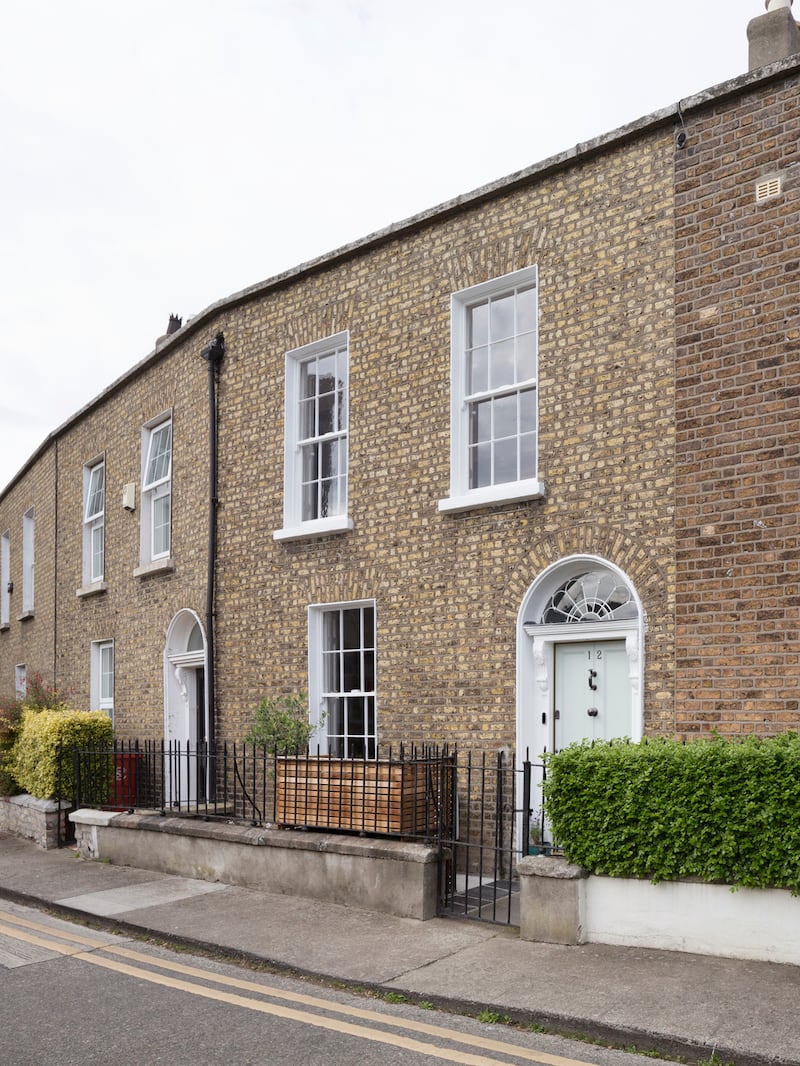
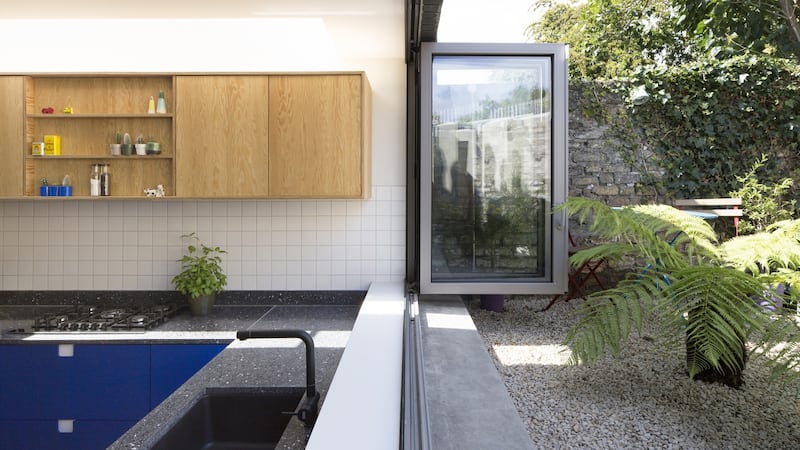
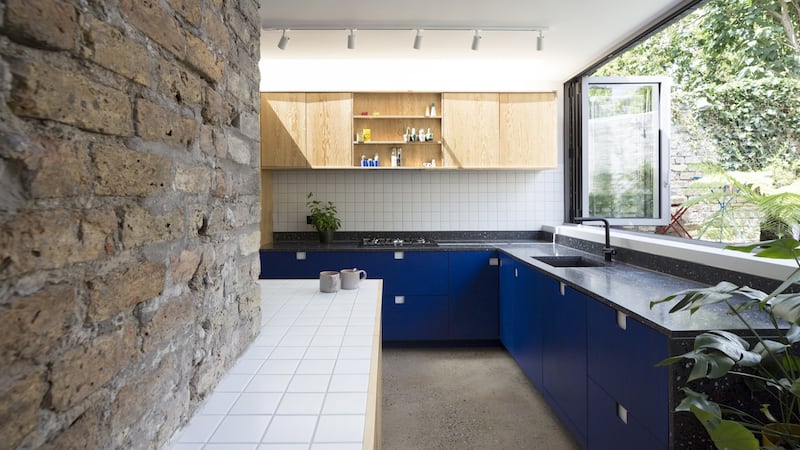

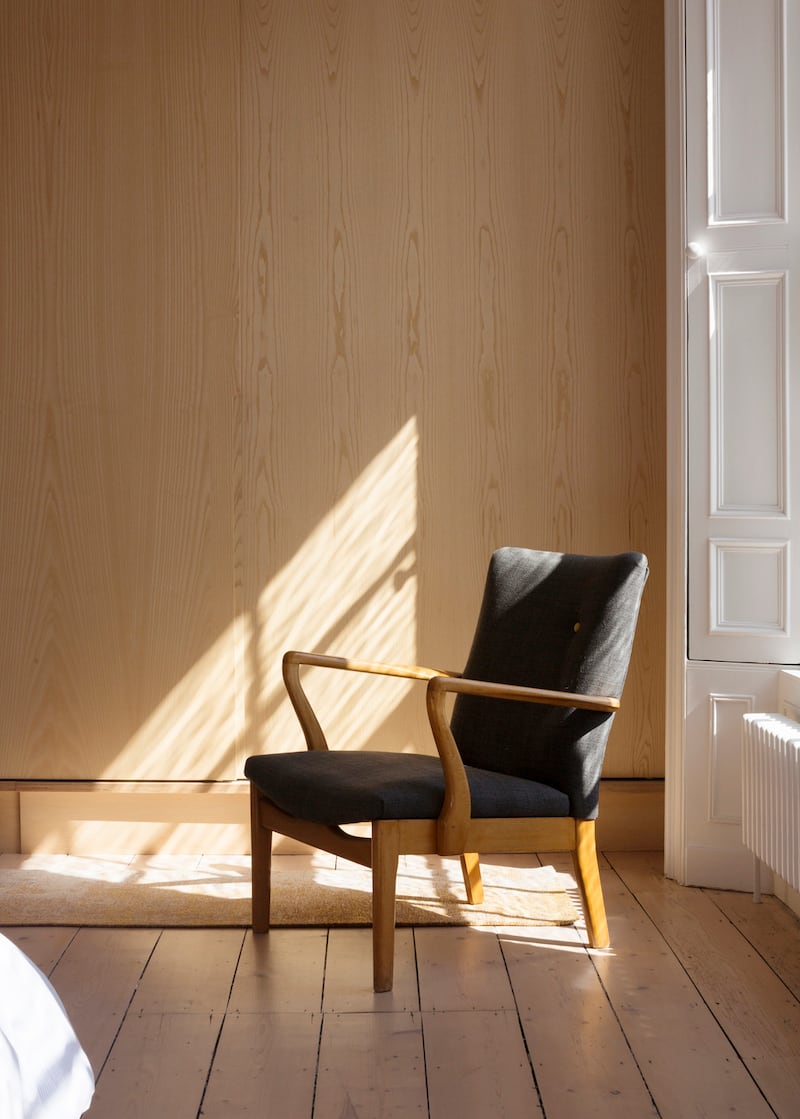
Standing in the blue hallway, with its elegantly decorated ceiling picked out in white, there is little indication of the fresh thinking at play ahead in the return and its new kitchen extension.
“Originally dark with a north-facing back garden, it appeared to be an uncompromising kind of space but it linked the old and new parts of the house,” de Siún says. Although the aspect is one beloved by artists for its non-direct light he says this orientation is something homeowners can get quite despondent about.
Bringing light in was critical. As an architect who has artfully executed several projects with this type of aspect, de Siún suggested simple, almost surgical incisions. He proposed one simple cut into the roof of the hall return, and one that extended the length of the room, completely reimagining this space, but not the dining room.
In houses of this era, the typical hall return ceiling is low, often anywhere between 1.9m and 2.2m in height, discernibly less than the 2.4 m heights that are now standard. “The first instinct was to excavate out into the garden and to push the kitchen out into it,” de Siún says.
Digging down to get better ceiling heights is costly, especially in a mid-terrace house with only pedestrian access to the rear. Instead, he suggested making a feature of the low ceiling but bringing in light to the rear via roof lights and glazing. Rather than the more typical open plan solution, the couple chose to retain the dining room’s chimney breast. “We liked the idea of building around existing features. The fireplace had been there for 170 years. It seemed horrible to rip it out,” Dunne says.
Instead, they pared it back to its original buff-coloured brick, losing the 1960s mock redbrick fire surround. Now the space is taken by a solid fuel Stoveax stove, inset into the inglenook.
To its right is an open shelving unit that runs the depth of the chimney breast to frame a view of the far side of the kitchen. It has been sprayed a pink redolent of strawberry Angel Delight and is the work of Andrew Burdock of AB Projects, who also did the kitchen and whose work you can also admire while sipping a glass of vino at cafe-cum-concept shop Hens Teeth, Blackpitts, Dublin 8.
Opposite the pair of prints by Camille Walala and framed by Hang Tough on the party wall is a large opening with polished brass cladding one side, supplied by Church Art Metals.
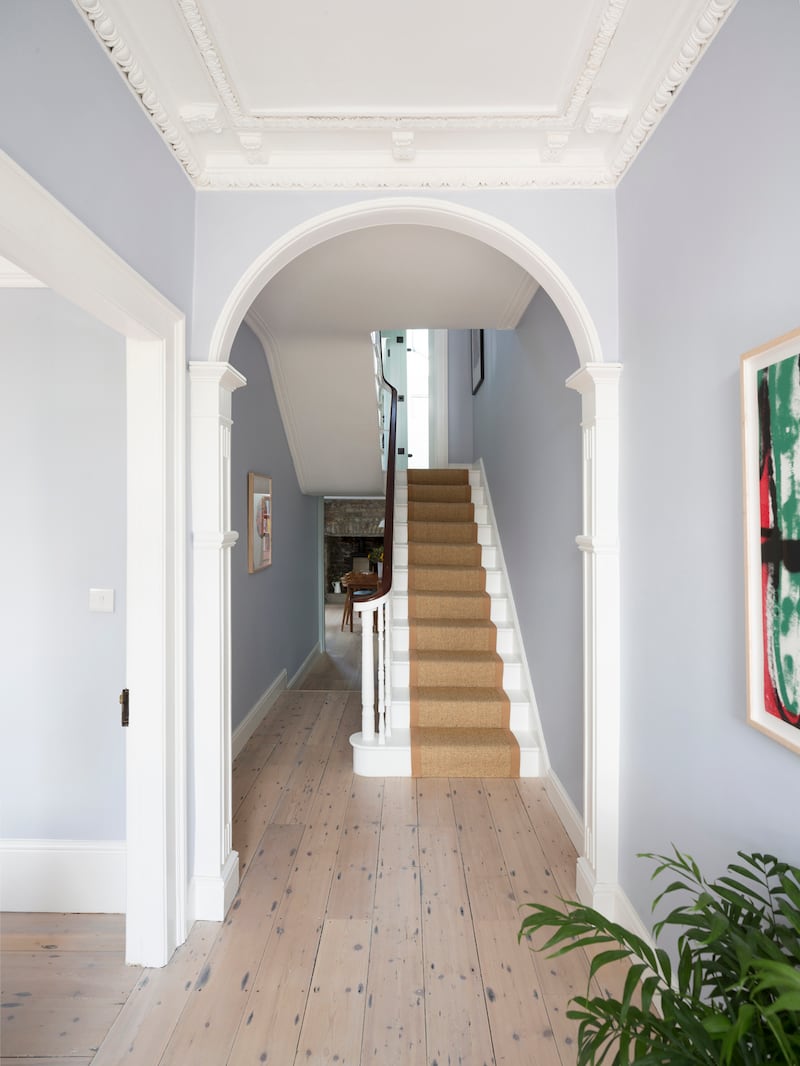

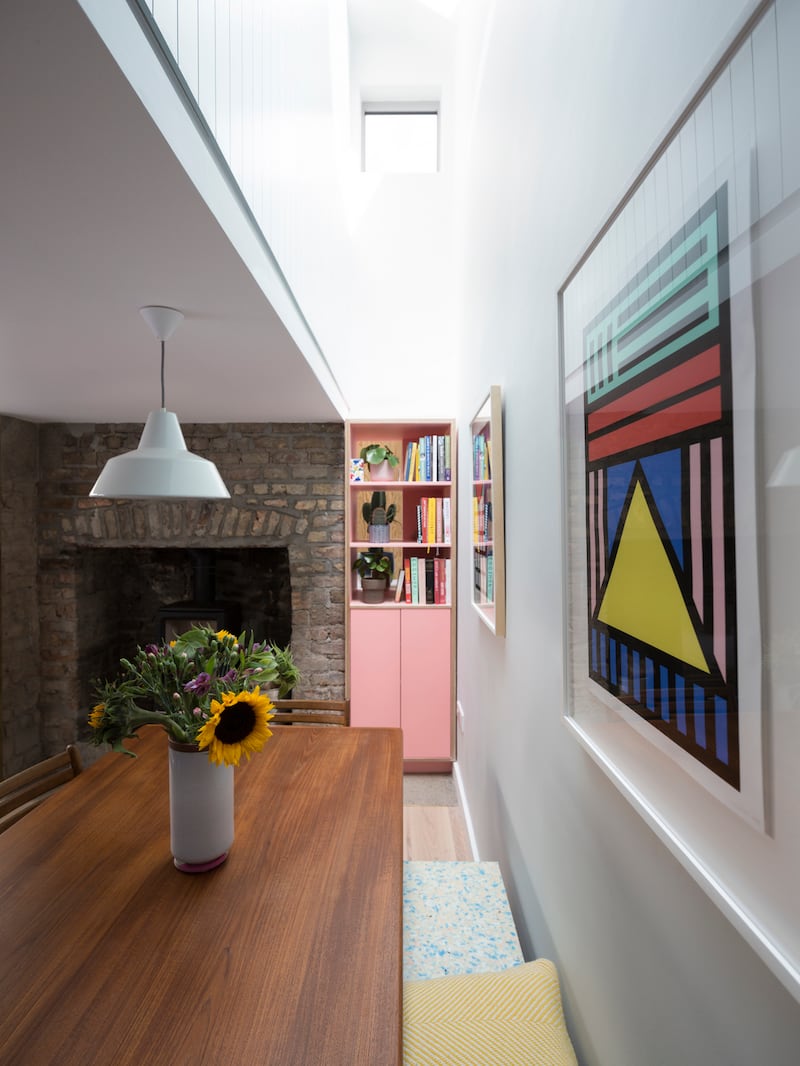
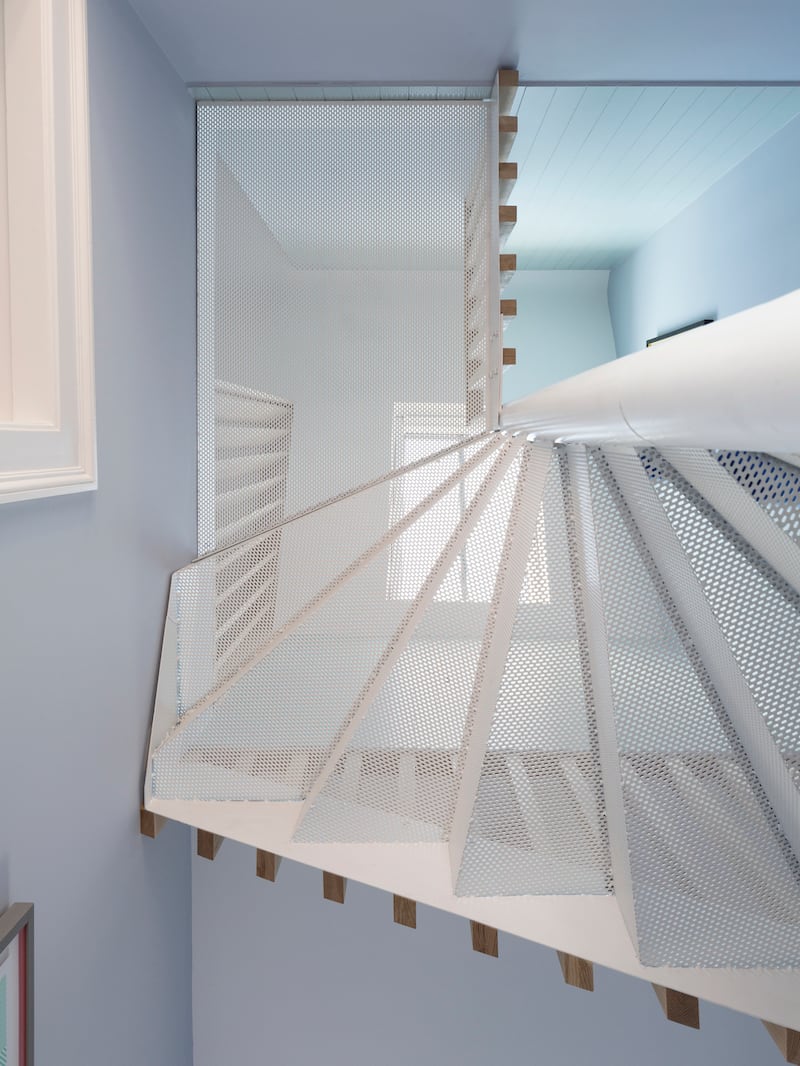
Retaining the chimney breast also created a sense of drama and delightful revelation on entering the kitchen. Inspired by the 1980s Memphis movement, black concrete specked with white aggregate countertops top douglas fir kitchen cabinetry.
The below counter units have been washed in a cobalt blue tint using Pantone’s Barely Blue, so you can still see the wood grain through the intense colour while those above the counter have been left au natural, save for a protective coat of matt lacquer. Above is another light incision, a roof light runs the length of the units and brings in natural task lighting.
There's a polished concrete floor underfoot, poured by builder Paul Mulligan of Mulligan Construction and buffed by Balcrete, while white terrazzo tiles, supplied by Tilestyle, cover the internal courtyard between the back wall of the house and this new extension. These choices all help bring in light. Outside is a white tiled bench to sit on and another, in a rich blue, acts as an outdoor kitchen counter where a Broil King barbecue takes pride of place.
The bright kitchen is set over several stepped layers with every conceivable corner of space utilised via low-set, built-in joinery. The idea of a feature window over the sink, has been greatly expanded to become a wall of large form, fold-back window, that opens hatch-style and connects the indoor and outdoor spaces without conceding any valuable floor space.
Simple white tiles on white grouting form the breakfast bar counter and the steps leading up to the back door are also lined with bespoke cabinetry, all underlit to highlight their architectural form and discretely illuminate the space on a cold winter morning. At the top of the room, is a large, double door pantry, now a tabernacle to all manner of dried goods.
The dining room roof light stole about 1m of width from the bathroom space above it on the return. But the addition of a clerestory glass screen has meant that this loss of space is barely discernible. The space has the same terrazzo tiles as the courtyard, Porcelanosa sanitaryware, a large black frame shower by Kilkenny-based Merlyn and black brassware. There’s a very simple fold-back privacy shutter on the window. There is tongue and groove joinery, throughout the hall and landings, all painted Sky Grey, also from Pantone’s range.
The main bedroom spans the width of the house and might just be the property's finest room. Bench seating frames the bed, where there is a pair of pill-shaped wall lights, Ostana by Ikea, and you can still see dimples in some of the original window glass panels.
Amesh steel staircase on the landing leading up to the attic room really catches the eye and adds wow factor. This has timber batten detailing and was fabricated by Conor’s father’s firm, H&M Ironworks. It was, de Siún says, “a moment of great collaboration. Brought in in three parts it took a lot of panting and grunting to install.”
There are thoughtful details throughout. In the front room for example a Portland stone fireplace takes pride of place. An original feature of the house it had been installed in the front room at first floor level, possibly the best room in the house and had been painted. Eric had Francis Street-based Antique Fireplace Restoration remove the layers of dull brown paint to reveal its natural, and beguiling green-grey colour.
While sporting some very on-trend elements throughout, the house still feels understated. Not unlike a very discreet nip-and-tuck cosmetic procedure the best original features and proportions of this two-bedroom plus attic space property have simply been highlighted and enhanced.












